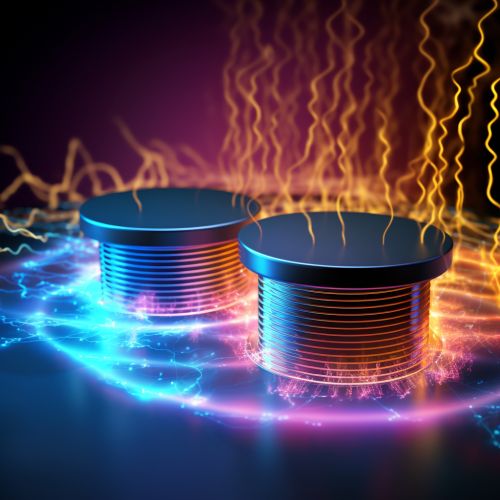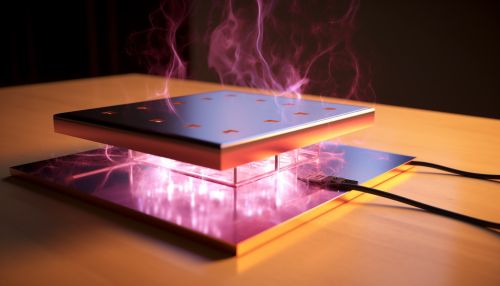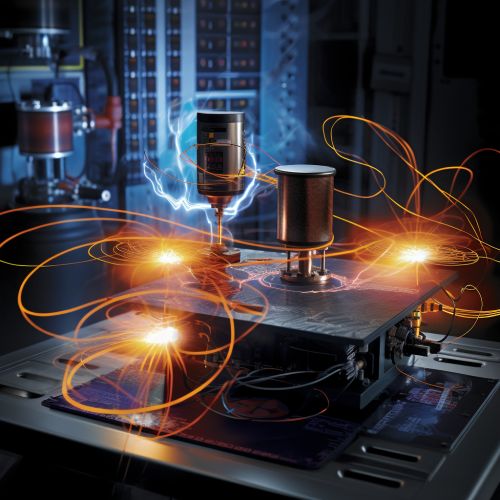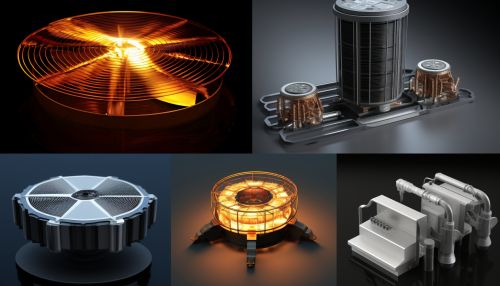Physics of Quantum Thermoelectricity in Energy Conversion
Introduction
Quantum thermoelectricity refers to the study of quantum mechanical effects on thermoelectric phenomena. This field of study is crucial in the context of energy conversion, particularly in the development of efficient thermoelectric devices. These devices exploit the thermoelectric effect to convert heat into electrical energy, and vice versa, with potential applications in power generation, refrigeration, and temperature sensing.


Quantum Mechanics and Thermoelectricity
The principles of quantum mechanics play a significant role in understanding and optimizing the thermoelectric effect. The quantum transport properties of electrons, such as wave-particle duality and quantum tunneling, can significantly influence the efficiency of energy conversion in thermoelectric materials.
Thermoelectric Effect
The thermoelectric effect is a physical phenomenon where a temperature difference across a material leads to the generation of an electric voltage, and conversely, an applied voltage can induce a temperature difference. This effect is the basis for thermoelectric energy conversion and can be divided into two related effects: the Seebeck effect and the Peltier effect.


Quantum Effects in Thermoelectric Materials
Quantum effects can significantly influence the thermoelectric properties of a material. For instance, quantum confinement in nanostructured materials can lead to an enhancement of the thermoelectric efficiency. Quantum tunneling, on the other hand, can contribute to the thermoelectric effect in molecular junctions and quantum dots.
Thermoelectric Efficiency and Figure of Merit
The efficiency of a thermoelectric device is quantified by a dimensionless parameter known as the thermoelectric figure of merit, denoted by ZT. It is a measure of the efficiency of a material to convert heat into electrical energy, or vice versa. The figure of merit depends on several material properties, including electrical conductivity, thermal conductivity, and Seebeck coefficient.


Quantum Thermoelectric Devices
Quantum thermoelectric devices exploit quantum effects to enhance the efficiency of energy conversion. These devices can be based on various quantum systems, such as quantum wells, quantum wires, and quantum dots. The design and optimization of these devices require a deep understanding of quantum mechanics, solid-state physics, and thermodynamics.
Applications of Quantum Thermoelectricity
Quantum thermoelectric devices have a wide range of potential applications, from power generation to refrigeration. They can be used to convert waste heat into useful electrical energy, offering a promising approach to energy conservation and sustainability. Moreover, due to their compact size and silent operation, these devices are ideal for applications in space exploration and microelectronics.


Future Prospects
The field of quantum thermoelectricity is still in its early stages, with many exciting prospects for future research and development. Advances in nanotechnology and quantum computing could lead to the development of more efficient and versatile thermoelectric devices. Furthermore, the integration of quantum thermoelectric devices with other energy conversion technologies could open up new avenues for sustainable energy production.
